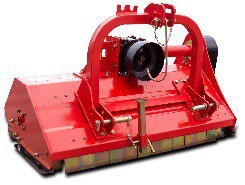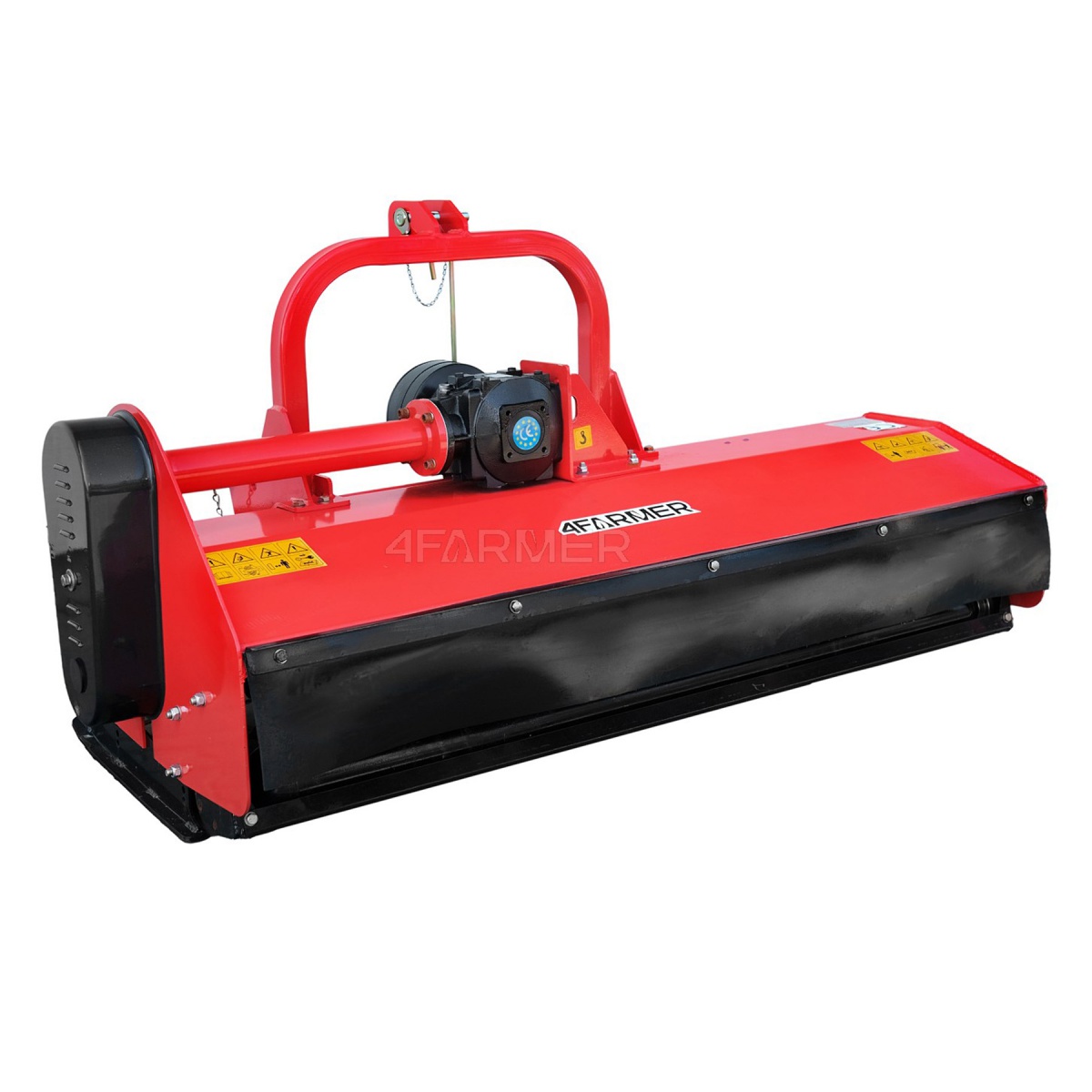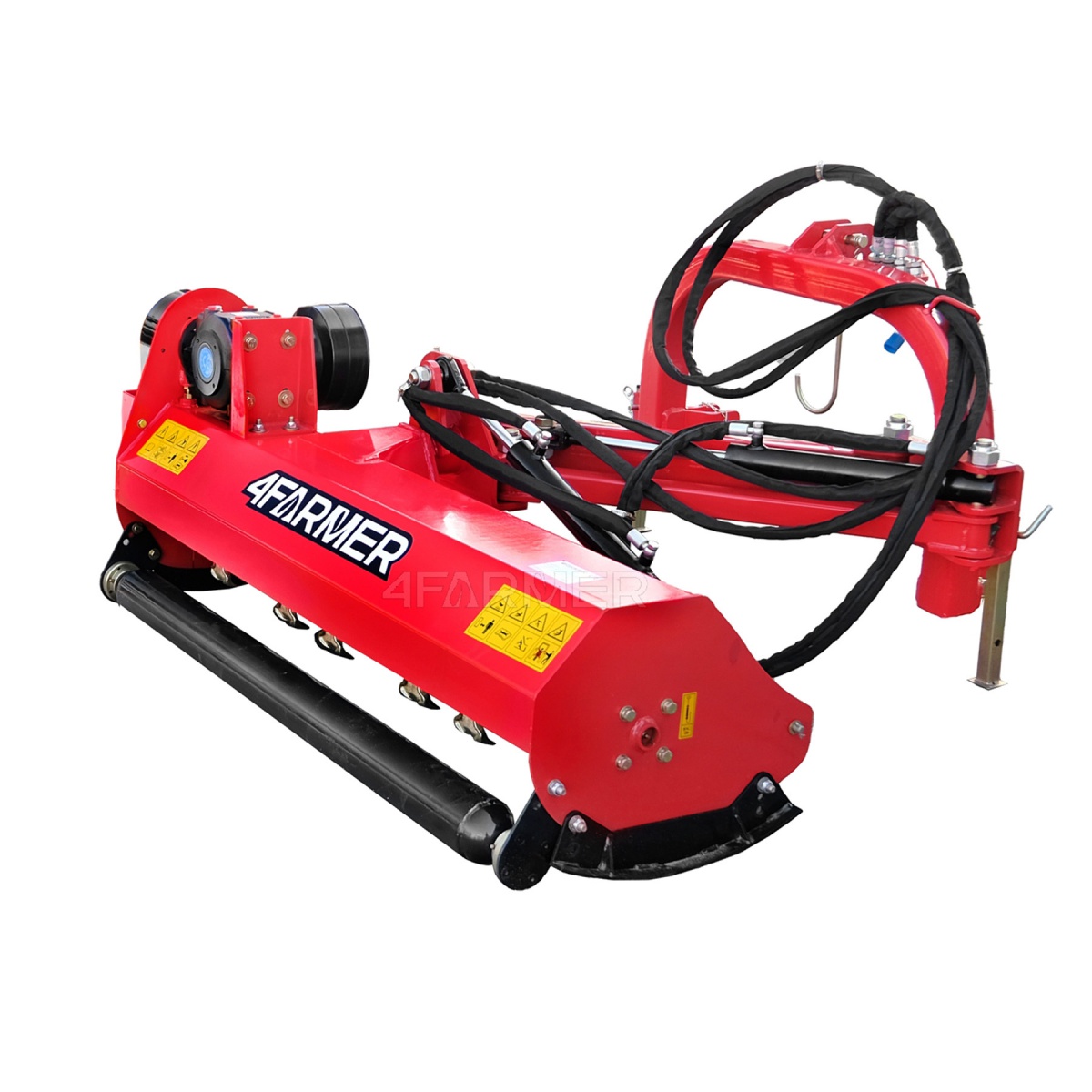When considering the purchase of a mower, it's worth understanding the differences between flail mowers and other types of mowers in detail. This comparison will help you decide which mower will best meet the challenges of your terrain, combining efficiency with durability in the toughest conditions.
Comparison of the flail mower and other types of mowers
The flail mower is a tool that is gaining popularity among farmers and landscapers. Thanks to its unique features, the flail mower stands out from other types of mowers such as rotary, reel or disc mowers. In this article, we will compare the flail mower with other types of mowers to show why you should consider buying one.
Operating principle and design
The flail mower works by shredding vegetation with heavy flails placed on a rotating shaft. These flails can survive contact with stones or roots, making the flail mower an ideal choice for rough and overgrown areas.
Rotary mowers use one or more rotating blades that cut the grass at high speed. These are effective on level surfaces, but can be damaged in rougher terrain.
Drum mowers have blades located on a drum that rotates vertically. They are suitable for regular lawn mowing but cannot cope with taller vegetation.
Disc mowers, on the other hand, consist of several discs with blades that cut the vegetation. They are popular in agriculture, especially for mowing large, even areas.
Performance and application
Flail mowers are extremely efficient in difficult conditions - they can cope with dense thickets, young trees and shrubs. Thanks to their extensive design, flail mowers are ideal for managing areas that require intensive maintenance.
Rotary mowers are fast and effective in open, level areas, but their use in overgrown or rocky terrain is limited.
Reel mowers provide a very fine cut of grass, which is important on presentable lawns, but are not designed for heavier work.
Disc mowers, on the other hand, are best for fast mowing of large, level areas such as pastures or arable fields, but are not suited to rough terrain.
Costs and operation
It is worth noting the cost/operation ratio of the equipment. Yes, flail mowers, due to their design, are more expensive to purchase and maintain. However, their durability and versatility often compensate for these costs in the long run.
Rotary mowers are usually cheaper than flail mowers, but repair costs can be higher, especially if used in inappropriate conditions.
Drum mowers have moderate purchase and maintenance costs, but are designed for light mowing work, which is a major limitation.
Disc mowers are priced similarly to flail mowers. It must also be acknowledged that they are less expensive to operate on large, open areas.
Advantages of flail mowers
When you choose a flail mower, you are investing in a machine capable of operating in the toughest conditions. Their ability to shred vegetation not only makes grounds maintenance easier, but also contributes to the natural fertilisation of the soil through mulching. This makes flail mowers not only a mowing tool, but also an important element in the ecosystem of green space management.
Among our favourites, we particularly recommend flail mowers from the 4FARMER and Geograss brands, such as the AGL 145 rear-side flail mower, the DP 175 flail mower and the EFGCH-145 hydraulic shift flail mower.
These are an excellent choice for those who need a reliable, robust and versatile machine for green spaces. Although the initial cost of flail mowers may be higher, the long-term benefits of using it, both economically and environmentally, cannot be overestimated. For professionals and individuals looking for an efficient solution for managing difficult terrains, a flail mower is the best investment.
















